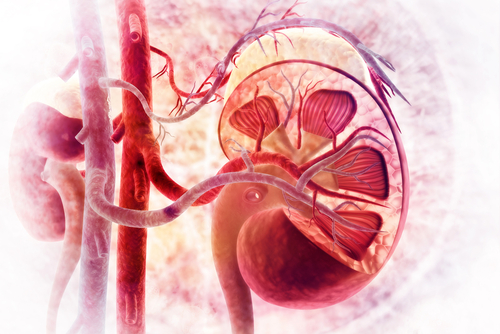Study Reveals Why Autoantibodies ‘Disappear’ in Lesions of MPO-positive AAV Patients

A new study found why some patients with ANCA-associated vasculitis (AAV) have autoantibodies in the blood, but not at the sites of injury. This matter has puzzled scientists for a long time.
While MPO autoantibodies are needed to induce vasculitis in such patients, the cells causing the injury produce an enzyme, called neutrophil elastase, that digests the autoantibodies. This creates pauci-immune lesions, which are lesions with little or no evidence of the presence of autoantibodies.
The findings were reported in the journal Nephron in a letter to the editor, titled “Vanishing Immunoglobulins: The Formation of Pauci-Immune Lesions in Myeloperoxidase-Antineutrophil Cytoplasmic Antibody-Associated Vasculitis.”
AAV patients producing a kind of autoantibodies against the myeloperoxidase (MPO) protein are characterized by necrotizing crescentic glomerulonephritis, a type of kidney disease, and inflammation in small blood vessels.
MPO antibodies long have been demonstrated to cause these features. However, while patients have MPO autoantibodies circulating in the blood, they usually lack these antibodies in their AAV lesions.
So, researchers set out to investigate why and how MPO autoantibodies were missing in these patients’ lesions, a feature not seen in other AAV patients.
ANCAs, or antineutrophil cytoplasmic antibodies, are autoantibodies that attack a certain type of white blood cells called neutrophils. When ANCAs attack these neutrophils, they make them attack the walls of small vessels in different tissues and organs of the body. This causes vasculitis.
Neutrophils produce MPO, a substance they release when blood vessels are injured. In some patients – MPO-positive AAV patients – the autoantibodies target MPO.
Using neutrophils isolated in the laboratory, researchers found that MPO antibodies trigger the formation of neutrophil extracellular traps (NETs), a kind of DNA net that forms on their surfaces and injures endothelial cells, the cells that line the inside of blood vessels.
But, while promoting NET formation, the MPO antibodies became isolated in these traps. Interestingly, researchers found that neutrophils produce another protein, called neutrophil elastase, which is able to degrade MPO antibodies.
This would explain the mystery of glomerulonephritis and vasculitis occurring in the absence of MPO antibodies in the vicinity of the lesions. The MPO antibodies trigger the neutrophils to cause injury, but at the same time, neutrophil elastase destroys the autoantibodies.
The researchers point out that neutrophil elastase may be partially responsible for causing vasculitis in the case of MPO-positive AAV.
“The collective findings suggest that neutrophil elastase released from NET-forming neutrophils, which was activated by MPO-ANCA, could be involved in the pathogenesis of pauci-immune lesions, at least in part, in MPO-ANCA-associated vasculitis via digestion of MPO-ANCA,” the researchers concluded in their letter.





